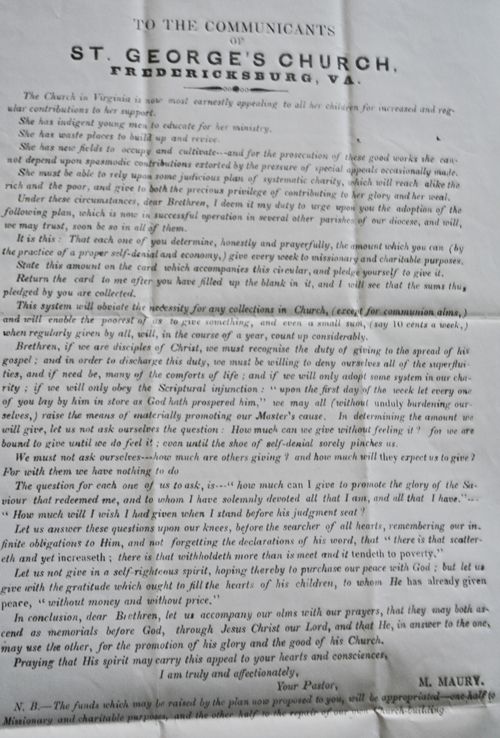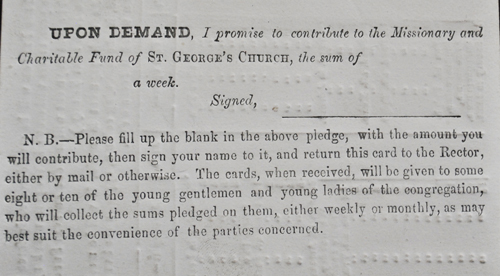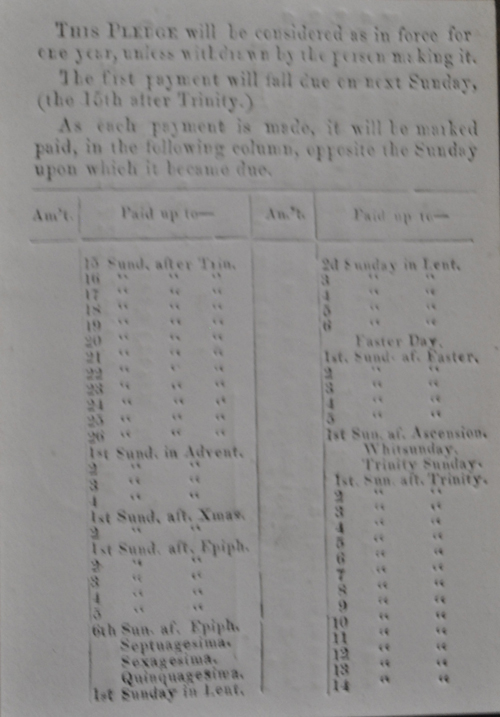The Rev. Magruder Maury became provisional rector Dec. 2 1864 when services resumed toward the end of the Civil Wwar and then became permanent rector Aug 15, 1865. He would serve St. George’s until April 1871.
Maury, a graduate of the University of Virginia, was the son of Richard B. Maury who was the grandson of the prominent Virginian Rev. James B. Maury, the subject of Patrick’s court case Parson’s Cause. Magruder’s brother was John Minor Maury, a lieutenant in the Navy and Matthew Fontaine Maury, the famous oceanographer.
Maury was one of the most financially adepts rectors. He was a fundraiser who went north to raise funds for Fredericksburg. From Quenzel’s history in 1865 -“One of its first actions [Vestry] was to send Maury north to collect funds for “our dismantled sanctuary”. He obtained $514 in New York City and $900 in Cold Spring, New York with a promise of further aid. See this article. Internally he was responsible for the pledge system or weekly collection system which helped the church get back on it feet after the Civil War.
The idea of a regular collection was advanced in November, 1868 to cover the $1500 in cost in the ceiling and other expenses. A committee of 3 was established April, 1869 to construct a list of “such persons as should be called to contribute to the support of the church.”
Eventually it grew into what became known as the “Envelope System”, the beginning the concept of a weekly pledge and was the second major financial initiative. A bag would be passed and parishioners would contribute funds in an envelope which would cover the “parochial expenses” or “the rector’s salary, the sexton’s hire, fuel lights, insurance, repairs, and church debts.” In the past collecting for the rector was a private task that people contributed separately from the service. This system would be more encompassing. The treasurer kept records and would be expected notify people past due that “punctual payment is expected.” When charitable gifts were needed the rector would notify the congregation.
In 1870, a committee of 3 was appointed to put out of special circular to the Church of the financial condition. The subject of the circular was “increased and regular support” . The idea was to “give every week for “missionary and charitable purposes”. Note the Minister will see that the sums are collected. It will eliminate special collections and enable the “poorest of use to give something.”
The committee would go further and actually put out a budget for the “proper maintenance of the Church” and appeal to the congregation to “bring their contributions up to that amount.” Additionally, they compiled a list of people that had failed to support the church and the Vestry was called upon to “urge them to contribute a specified sum every week.”
The circular is below:

Accompanying the request is a pledge card.

The last document is to begin the campaign. It apparently was dated on the 14th Sunday after Trinity since the pledge would begin on the 15th Sunday after Trinity. (There were 26 Sundays after Trinity before Advent begins. Now we date those Sundays after Pentecost rather than Trinity Sunday):

The system was a success and the pledge system is still being used today. In June 1870, it was noted that it had produced a “larger amount with more punctuality of payment with more ease to the congregation.” Pledges of $2,270 had been made of which $2,055 was collected. The Pew tax of $661 was collected. With all sources and expenses, the church posted a surplus of $260.86.
